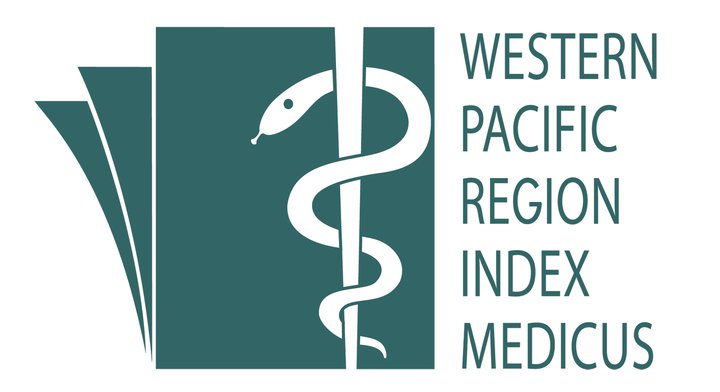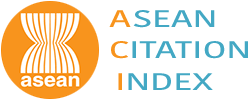Reliability and Validity of Malay language version of International Physical Activity Questionnaire (IPAQ-M) among The Malaysian Cohort participants
Abstract
Introduction: Validation of instruments is essential when assessing physical activity (PA). The aim of this study was to validate a Malay language version of the International Physical Activity Questionnaire (IPAQ-M) against Actical accelerometer and to determine its reliability and validity.
Methodology: A total of 90 Malay adults aged 35-65 years participating in The Malaysian Cohort project were recruited for this study. The IPAQ-M comprised 12 items, covering vigorous, moderate, walking, sitting and sleeping activities, was interview-administered on two occasions (Day 1 and Day 9). Participants wore the Actical accelerometer for seven consecutive days between the two interview sessions.
Results: Validity tests showed that time spent in moderate-vigorous physical activity (MVPA) (min wk-1) from IPAQ-M was significantly correlated with MVPA from accelerometer (r=0.32, p<0.01). Time spent in vigorous activity (r=0.44) and total activity (r=0.36) from IPAQ-M were significantly correlated (p<0.01) with that measured by accelerometer, but no correlation was observed for sedentary behaviour. Reliability tests revealed significant correlations between the two interview sessions for all intensities of PA (r=0.55 to 0.71, p<0.01). Bland-Altman plots showed that time spent in MVPA for IPAQ-M was significantly different from that measured by accelerometer (mean difference: 98.02 min wk-1; 95% limits of agreement: -785.33 to 1317.83 min wk-1; p<0.01). When classifying people into meeting PA recommendation, the agreement between the two instruments was fair (κ=0.22).
Conclusion: The IPAQ-M has acceptable validity for MVPA, vigorous and total physical activity, and was reliable for assessing the physical activity of Malay adults.
Keywords: accelerometer, IPAQ, physical activity, reliability, validationÂ
References
Loreto CD, Fanelli C, Lucidi P, Murdolo G, Cicco AD, Parlanti N, et al. Validation of a counselling strategy to promote the adoption and the maintenance of physical activity by type 2 Diabetics subjects. Diabetes Care. 2003; 26:2.
Berlin JE, Storti KL, Brach JS. Using activity monitors to measure physical activity in free-living conditions. Physical Therapy. 2006, 86:1137-45.
World Health Organization. Global recommendations on physical activity for health. Geneva: World Health Organization; 2010.
Lim SS, Carnahan E, Danaei G, Vos T, Lopez AD, Murray CJL, et al. Annual deaths attributable to physical inactivity: whither the missing 2 million? — Author’s reply. The Lancet. 2013; 381:993.
IPH (Institute for Public Health). The Third National Health and Morbidity Survey (NHMS III) 2006. General Findings. Kuala Lumpur: Ministry of Health Malaysia; 2008.
Ainsworth BE. How do I measure physical activity in my patients? Questionnaires and objective methods. British Journal of Sports Medicine. 2009; 43:6-9.
Bergman P. The prevalence of physical activity among a random sample of the Swedish population between 18-74 years. Preventive Nutrition and Physical Activity Reports. 2004; 4:1-18.
Livingstone MB, Robson PJ, Wallace JM, McKinley MC. How active are we? Levels of routine physical activity in children and adults. Proceedings of the Nutrition Society. 2003; 62:681-701.
Bonomi G, Plasqui G, Goris AHC, Westerterp KR. Improving assessment of daily energy expenditure by identifying types of physical activity with a single accelerometer. Journal of Applied Physiology. 2009; 107:655-61.
Ward DS, Evenson KR, Vaughn A, Rodgers AB, Troiano RP. Accelerometer use in physical activity: best practices and research recommendations. Medicine and Science in Sports and Exercise. 2005; 37(11):S582.
Craig CL, Marshall A, Sjostrom M, Bauman A, Booth M, Ainsworth B, et al. International Physical Activity Questionnaire: 12 country reliability and validity. Medicine and Science in Sports and Exercise. 2003; 35:1381-95.
Kurtze N, Rangul V, Hustveldt B. Reliability and validity of the International Physical Activity Questionnaire in the Nord-Trondelag Health Study (HUNT) population of men. BMC Medical Research Methodology. 2008; 8:63.
World Health Organization. WHO Global infobase on physical activity-data from the World Health Survey 2003. Geneva: World Health Organization. 2008; Available from: http://www.who.int/infobase
Chu AYH, Moy FM. Reliability and Validity of the Malay International Physical Activity Questionnaire (IPAQ-M) Among a Malay Population in Malaysia. Asia Pacific Journal of Public Health. 2012; Online First: doi: 10.1177/1010539512444120
Rahman J, Syed Zulkifli SZ, Mohd Arman K, Nazihah AJ, Norliza I, Norkhamiwati MK, et al. Cohort profile: The Malaysian Cohort (TMC) project: a prospective study of non-communicable diseases in a multi-ethnic population. International Journal of Epidemiology. 2014;1–9. Advance Access: doi: 10.1093/ije/dyu089
The International physical activity questionnaire. Guidelines for data processing and analysis of the International Physical Activity Questionnaire (IPAQ). Revised 2005. Available from: http://www.ipaq.ki.se
Hagstromer M. Assessment of health-enhancing physical activity at population level. Sweden: Karolinska Institute; 2007:1-50.
Poh BK, Nik Shanita S, Rasyedah AR, Tan SY. Key Message 3: Be physically active everyday. In: Malaysian Dietary Guidelines. Putrajaya: Ministry of Health Malaysia; 2010. p. 38-62.
Pfeiffer KA, Mciver KL, Dowda M, Almeida MC, Pate RR. Validation and calibration of the Actical accelerometer in preschool children. Medicine and Science in Sports and Exercise. 2006; 38(1):152-7.
Wolin KY, Heil DP, Askews S, Matthews CE, Bennett GG. Validation of the International Physical Activity Questionnaire-Short among blacks. Journal of Physical Activity and Health. 2008; 5(5):746-60.
Trost SG, McIver KL, Pate RR. Conducting accelerometer-based activity assessments in field-based research. Medicine and Science in Sports and Exercise. 2005; 37:531-43.
Heil DP. Predicting activity energy expenditure using the Actical activity monitor. Research Quarterly for Exercise and Sport. 2006; 77: 64-80.
Bland JM, Altman DG. Statistical methods for assessing agreement between two methods of clinical measurement. Lancet. 1986; 1:307-10.
Ekelund U, Sepp H, Brage S, Becker W, Jackes R, Hennings M, et al. Criterion-related validity of the last 7-day, short form of the International Physical Activity Questionnaire in Swedish adults. Public Health Nutrition. 2006; 9(2):258-65.
Boon RM, Hamlin MJ, Steel GD, Ross JJ. Validation of the New Zealand Physical Activity Questionnaire (NZPAQ-LF) and the International Physical Activity Questionnaire (IPAQ-LF) with accelerometry. British Journal of Sports Medicine. 2010; 44(10):741-6.
Hagstromer M, Oja P, Sjostrom M. The International Physical Activity Questionnaire (IPAQ): A study of concurrent and construct validity. Public Health Nutrition. 2006; 9(6):755-62.
Lee PH, Macfarlane DJ, Lam TH, Stewart SM. Validity of the International Physical Activity Questionnaire Short Form (IPAQ-SF): a systematic review. International Journal of Behavioral Nutrition and Physical Activity. 2011; 8:115.
Macfarlane DJ, Lee CC, Ho EY, Chan KL, Chan DT. Reliability and validity of the Chinese version of IPAQ (short, last 7 days). Journal of Science and Medicine in Sport. 2007; 10(1):45-51.
Fogelholm M, Malmbag J, Suni J. International Physical Activity Questionnaire: Validity against fitness. Medicine and Science in Sports and Exercise 200;, 38:753-60.
Poh BK, Safiah MY, Tahir A, Siti Haslinda MD, Siti Norazlin, N, Norimah, AK, et al. Physical activity pattern and energy expenditure of Malaysians adults: Findings from the Malaysian Adult Nutrition Survey (MANS). Malaysian Journal of Nutrition. 2010; 16(1):13-37.
Rzewnicki R, Vanden AY, de Bourdeaudhuij I. Addressing over reporting on the International Physical Activity Questionnaire (IPAQ) telephone survey with a population sample. Public Health Nutrition. 2003; 6(3):299-305.
Oyeyemi AL, Oyeyemi AY, Adegoke BO, Oyetoke FO, Aliyu HN, Aliyu SU, et al. The short International Physical Activity Questionnaire: Cross-cultural adaptation, validation and reliability of the Hausa language version in Nigeria. BMC Medical Research and Methodology. 2011; 11:156.
Dishman RK, Rooks CR, Thom NJ, Moh KW, Nigg CR. Meeting U.S. Healthy People 2010 levels of physical activity: Agreement of 2 measures across 2 years. Annals of Epidemiology. 2010; 20: 511-23.
Landis JR, Koch G. The measurement of observer agreement for categorical data. Biometrics. 1977; 33:159-74.
Adams SA, Matthews CE, Ebbeling CB, Moore CG, Cunningham JE, Fulton J, et al. The effect of social desirability and social approval on self-reports of physical activity. American Journal of Epidemiology. 2005; 161:389-98.
Ainsworth BE, Levy S. Assessment of health-enhancing physical activity: Methodological issues. In. Oja P, Borms J, editor. Health Enhancing Physical Activity. Oxford: Meyer & Meyer Sport; 2004. p. 239-70.
Barnett J, Nigg C, de Bourdeaudhuij I, Maglione C, Maddock J. The effect of item order an physical activity estimates using the IPAQ. Californian Journal of Health Promotion. 2007; 5:23-9.
Masse LC, Fuemmeler BF, Anderson CB, Matthews CE, Trost SG, Catellier DJ, et al. Accelerometer data reduction: A comparison of four reduction algorithms on select outcome variables. Medicine and Science in Sports and Exercise. 2005; 37: S544-54.
Welk GJ. Physical activity assessments for health-related research. Champaign: Human Kinetics; 2002.
Esliger DW, Copeland JL, Barnes JD, Tremblay MS. Standardizing and optimizing the use of accelerometer data for free-living physical activity monitoring. Journal of Physical Activity and Health. 2005; 2(3):366-83.
Downloads
Published
How to Cite
Issue
Section
License
IJPHR applies the Creative Commons Attribution (CC BY) license to articles and other works we publish. If you submit your paper for publication by IJPHR, you agree to have the CC BY license applied to your work. Under this Open Access license, you as the author agree that anyone can reuse your article in whole or part for any purpose, for free, even for commercial purposes. Anyone may copy, distribute, or reuse the content as long as the author and original source are properly cited. This facilitates freedom in re-use and also ensures that IJPHR content can be mined without barriers for the needs of research.






